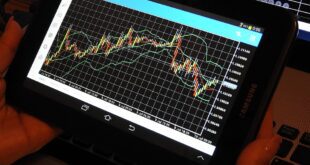The Role of Technology in Modern Risk Management
Adapting to an Evolving World
Risk management is an essential pillar of sustainable success in today’s rapidly changing business landscape. With the never-ending evolution of technology, organizations are facing an increasing array of risks that require innovative strategies to mitigate them effectively. Thankfully, the role of technology in modern risk management has emerged as a powerful tool, enabling businesses to navigate uncertainties with confidence and efficiency.
The Early Days: Traditional Risk Management
In the early days, risk management practices were primarily manual and relied heavily on outdated records and cumbersome workflows. This often made it challenging to effectively identify, assess, and respond to risks in a timely manner. However, with the advent of technology, significant advancements have revolutionized the field, bringing about drastic improvements in the ability to manage and mitigate risks.
Enhancing Risk Identification and Assessment
Technology has introduced new dimensions to risk identification and assessment, equipping organizations with powerful tools to proactively identify potential risks. Advanced data analytics, machine learning algorithms, and artificial intelligence have made it possible to analyze vast amounts of data quickly and accurately, providing valuable insights into potential risks.
Data-Driven Insights for Comprehensive Risk Awareness
By leveraging technology, businesses can now effortlessly collect and process real-time data from a wide range of sources. This allows for a comprehensive understanding of potential risks, closer monitoring of external threats, and insightful trend analysis. Armed with this in-depth knowledge, organizations are empowered to make informed decisions and develop robust risk management strategies that address potential issues proactively.
Streamlining Risk Monitoring and Response
The real-time nature of technology enables organizations to monitor and respond to risks more efficiently. With the availability of various risk management software, tools, and platforms, businesses can establish streamlined workflows that enhance collaboration, automate processes, and ensure prompt response to emerging risks.
A Collaborative Approach to Risk Mitigation
Modern risk management technologies enable seamless collaboration across different departments, enhancing the coordination and communication necessary for successful risk mitigation. These technologies facilitate real-time sharing of information, enabling teams to work together to determine risk impacts and devise appropriate strategies early on.
Expediting Recovery and Reconstitution
In addition to proactive risk management, technology plays a vital role in facilitating recovery and reconstitution plans when unforeseen events occur. Organizations can leverage cloud-based data storage, backup systems, and disaster recovery software to quickly resume operations and minimize financial losses in the face of disruptions.
The Optimistic Future of Risk Management
As technology continues to advance, the role it plays in modern risk management is expected to become even more integral. The adoption of emerging technologies such as blockchain, Internet of Things (IoT), and predictive analytics opens up new avenues for efficient risk management that were once inconceivable. With a cheerful perspective, businesses can look forward to embracing this innovative future, strengthening their risk management practices, and reaping the rewards of sustained success.
 Mind Uncharted Explore. Discover. Learn.
Mind Uncharted Explore. Discover. Learn.



